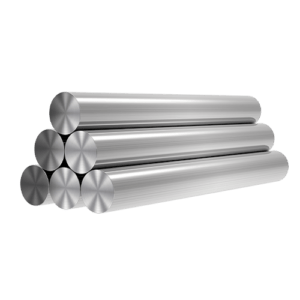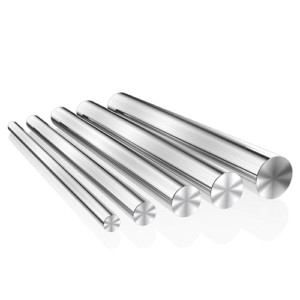Welcome to My Blog!
Before we dive into the content, I’d love for you to join me on my social media platforms where I share more insights, engage with the community, and post updates. Here’s how you can connect with me:
Facebook:https://www.facebook.com/profile.php?id=100090063158454
Now, let’s get started on our journey together. I hope you find the content here insightful, engaging, and valuable.
Introduction

303 stainless steel bars are a versatile and high-performance alloy that has become indispensable in various industries. Renowned for its superior machinability and excellent corrosion resistance, 303 stainless steel offers a unique blend of properties that make it an ideal choice for a wide range of applications, from automotive components to medical devices. In this comprehensive guide, we will delve into the intricacies of 303 stainless steel bars, exploring their key properties, diverse applications, and significant benefits.
Understanding the Composition and Properties of 303 Stainless Steel Bar
303 stainless steel bar is an austenitic stainless steel alloy that belongs to the 300 series. Its composition is carefully engineered to achieve a balance of strength, ductility, and machinability. The addition of sulfur to the alloy is a key factor that sets it apart from other stainless steel grades. This sulfur content significantly enhances the material’s machinability, making it easier to cut, drill, and machine into complex shapes and intricate designs.
Despite its excellent machining properties, 303 stainless steel bar retains the corrosion resistance and strength characteristics typical of stainless steel. It exhibits good resistance to corrosion in a variety of environments, including exposure to atmospheric conditions, mild acids, and alkalis. This corrosion resistance, combined with its strength and durability, makes 303 stainless steel bar a reliable choice for applications where long-lasting performance is essential.
Diverse Applications of 303 Stainless Steel Bars
The unique properties of 303 stainless steel have led to its widespread adoption across numerous industries. Some of the key applications of 303 stainless steel bars include:
- Automotive Industry:
- Fasteners: Bolts, nuts, and screws made from 303 stainless steel offer excellent corrosion resistance and strength, ensuring the longevity of automotive components.
- Bushings: 303 stainless steel bushings provide smooth and efficient operation of various automotive components, reducing friction and wear.
- Shafts: 303 stainless steel shafts exhibit high strength and durability, making them suitable for demanding automotive applications.
- Aerospace Industry:
- Aircraft Fittings: 303 stainless steel is used to manufacture a wide range of aircraft fittings, including brackets, clamps, and hinges, due to its excellent corrosion resistance and strength.
- Components: 303 stainless steel is employed in various aircraft components, such as control rods and actuators, where reliability and performance are critical.
- Medical Device Industry:
- Surgical Instruments: 303 stainless steel is widely used in the manufacturing of surgical instruments, as it is biocompatible, corrosion-resistant, and easy to sterilize.
- Implants: 303 stainless steel implants, such as orthopedic implants and dental implants, offer excellent biocompatibility and long-lasting performance.
- Electronics Industry:
- Precision Components: 303 stainless steel is used to manufacture precision components for electronic devices, such as connectors, springs, and gears, due to its excellent machinability and dimensional stability.
- Housings: 303 stainless steel bar housings provide robust protection for electronic components, shielding them from environmental factors and mechanical damage.
- Food Processing Industry:
- Equipment: 303 stainless steel is used to manufacture food processing equipment, such as valves, pumps, and mixers, as it is easy to clean, corrosion-resistant, and meets food safety standards.
- Chemical Processing Industry:
- Components: 303 stainless steel is used to fabricate components for chemical processing equipment, such as pipes, fittings, and tanks, due to its excellent corrosion resistance to various chemicals.
Benefits of Using 303 Stainless Steel Bars
The use of 303 stainless steel bars offers a multitude of benefits to manufacturers and end-users:
- Superior Machinability: The excellent machinability of 303 stainless steel significantly reduces manufacturing time and costs, allowing for efficient production of complex components.
- Enhanced Product Quality: The precise machining capabilities of 303 stainless steel enable the production of high-quality components with tight tolerances, improving product performance and reliability.
- Extended Product Lifespan: The corrosion resistance of 303 stainless steel ensures the longevity of products, reducing the need for frequent replacements and maintenance.
- Versatility: The wide range of applications of 303 stainless steel makes it a versatile material suitable for diverse industries and use cases.
- Cost-Effectiveness: While 303 stainless steel may have a higher initial cost compared to some other materials, its long-term performance and durability can lead to significant cost savings over time.
Factors to Consider When Selecting 303 Stainless Steel Bars

When selecting 303 stainless steel bars for a specific application, several factors should be considered:
- Application Requirements: The specific requirements of the application, such as the level of corrosion resistance, strength, and machinability needed, will influence the choice of 303 stainless steel grade and size.
- Machining Operations: The complexity of the machining operations and the desired tolerances will determine the suitability of 303 stainless steel.
- Corrosion Environment: The corrosive environment to which the 303 stainless steel components will be exposed should be carefully evaluated to ensure adequate corrosion protection.
- Cost Considerations: The cost of 303 stainless steel should be balanced with the overall cost of the final product, considering factors such as manufacturing costs, maintenance costs, and product lifespan.
Conclusion
303 stainless steel bars offer a compelling combination of properties that make them an ideal choice for a wide range of applications. Their superior machinability, corrosion resistance, and strength contribute to the production of high-quality, durable, and reliable components. By understanding the benefits and applications of 303 stainless steel, engineers, manufacturers, and designers can make informed decisions to optimize their products and processes.
FAQ
What is the difference between 303 and 304 stainless steel?
The primary difference between 303 and 304 stainless steel lies in their machinability. 303 stainless steel contains sulfur, which significantly improves its machinability compared to 304 stainless steel. While both grades offer excellent corrosion resistance, 303 stainless steel is generally preferred for applications requiring complex machining operations.
Can 303 stainless steel be welded?
Yes, 303 stainless steel can be welded using appropriate welding techniques. However, it is important to note that welding can affect the corrosion resistance of the material. Proper welding procedures and post-weld heat treatment may be necessary to maintain the desired level of corrosion resistance.
Is 303 stainless steel magnetic?
In its annealed condition, 303 stainless steel is non-magnetic. However, cold working can induce some magnetic properties in the material.
